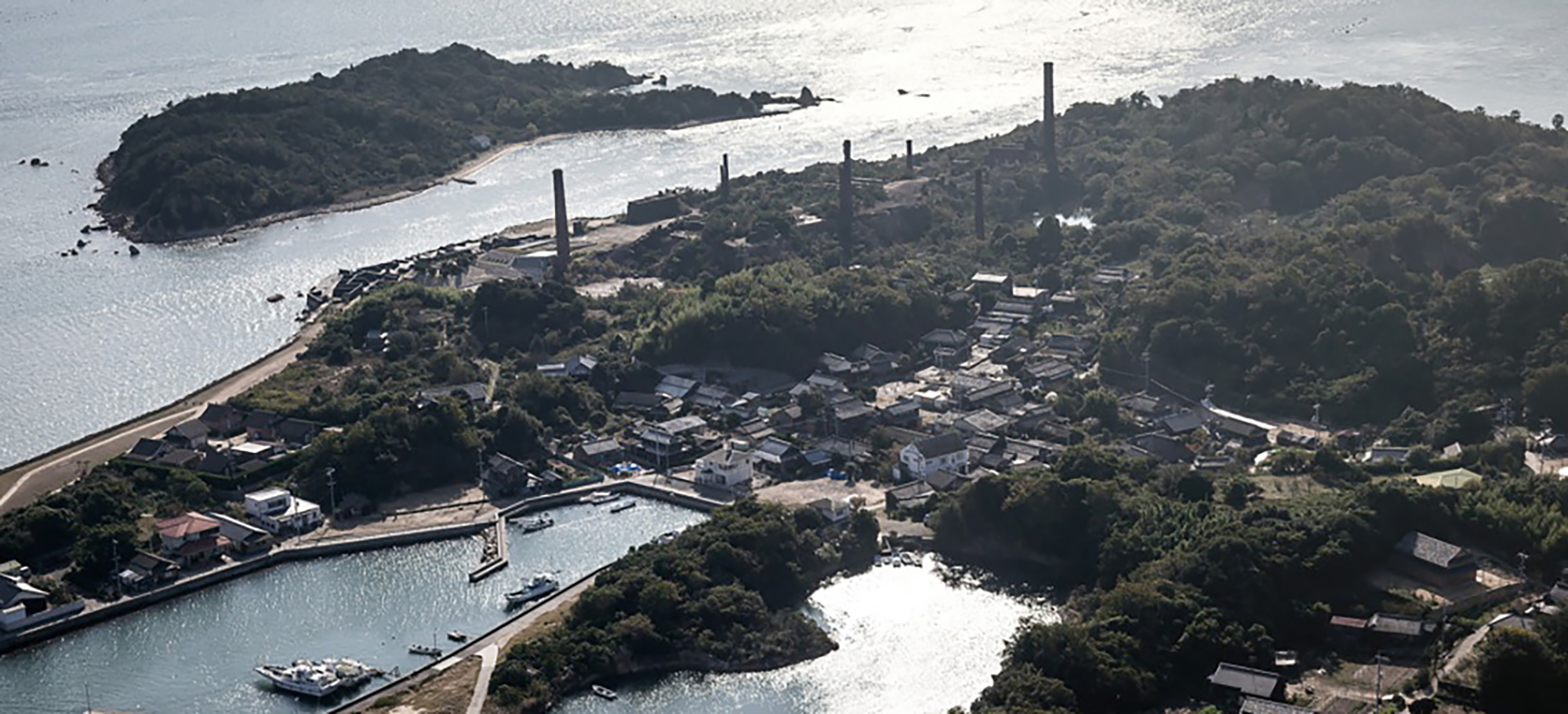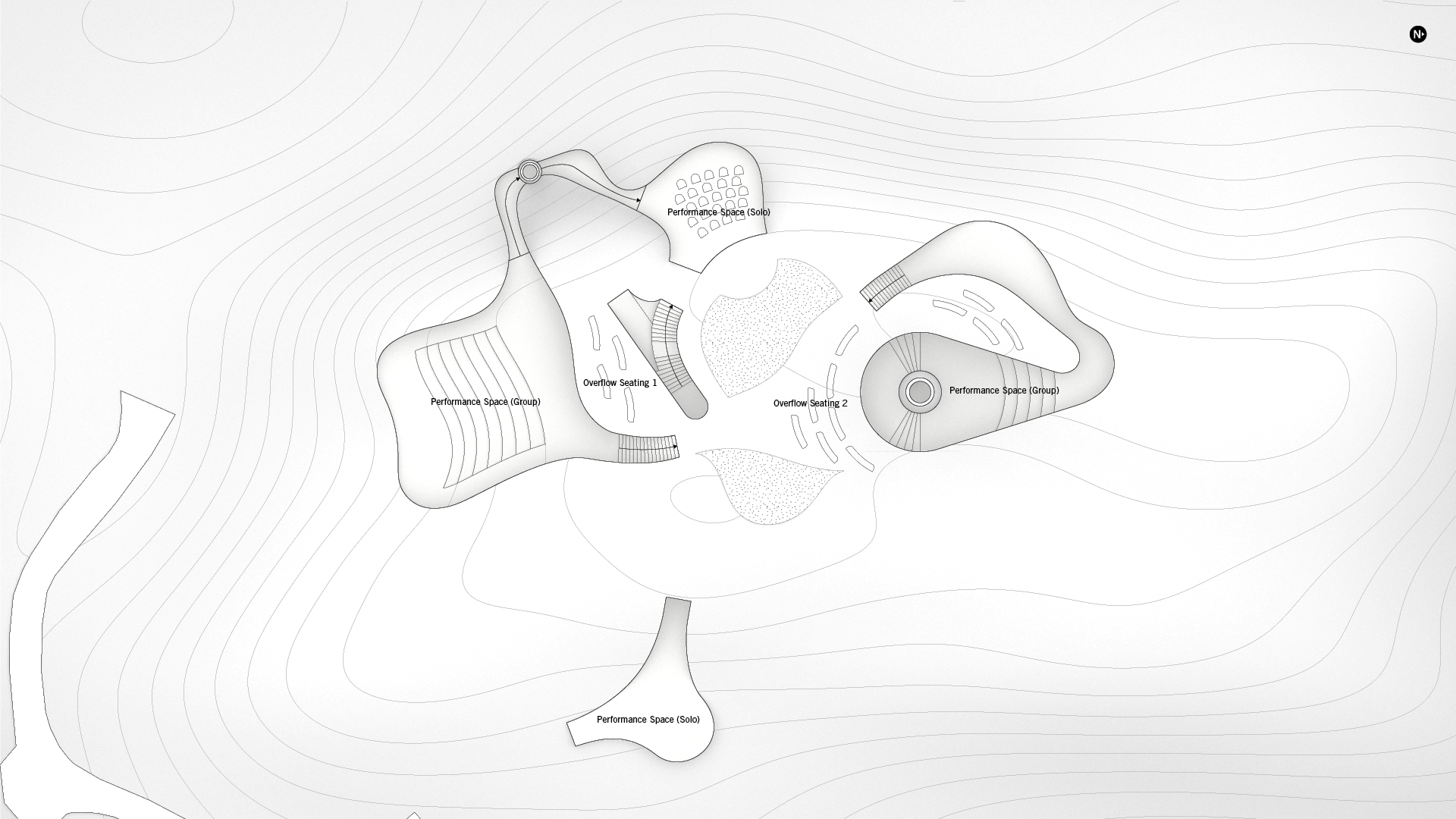
Studio Sejima Vienna
May 2016
Presented and exhibited at the
15th Venice Biennale Architettura 2016
May 2016
Instructor:
Kazuyo Sejima, SANAA
Presented and exhibited at the
15th Venice Biennale Architettura 2016
This proposal is situated on the east side of the Inujima island, close to Hiroshi Sambuichi's remodeled Seirensho museum. On this part of Inujima lies an interesting phenomenon where chimneys ruins present a discrepancy to not only the island, but the region’s subtle, undulating topography. The verticality of the chimneys poses a tension among them in both their varying heights and spread on the island.
The area consists of a total of six chimneys, three larger and three smaller ones. Most of them were left untouched since they were abandoned, except a single one attached to the Seirensho museum, which is used for ventilation. This project is interested in a new way of experiencing this network of chimneys and at the same time allow for performances to be held. A neighboring pair of large/small chimneys were selected as anchor points for a path that points to various chimneys within the network. This meandering path tapers and expands at various viewpoints to create thresholds for event and meditation spaces.

One enters the space from a tunnel that leads to a path that functions differently when the direction of travel is switched. Most of the year when events are not held, this space serves as a scenic path that uses views and vistas to guide one along the path; during an event (likely after dark), views and vistas fade away and one is guided solely by sounds and reverberations of various performances.
A mix of concrete and Karami (copper slag) brick is used. In most of the event and meditation spaces, concrete is used to maintain a minimal touch. Karami bricks found on site are used only when the space comes into direct contact with the chimneys to juxtapose their use of clay bricks. The use of Karami bricks is also a gesture to reconstruct the relationship between the now lost factory buildings built with the very same brick and their remaining chimney ruins.
A mix of concrete and Karami (copper slag) brick is used. In most of the event and meditation spaces, concrete is used to maintain a minimal touch. Karami bricks found on site are used only when the space comes into direct contact with the chimneys to juxtapose their use of clay bricks. The use of Karami bricks is also a gesture to reconstruct the relationship between the now lost factory buildings built with the very same brick and their remaining chimney ruins.








Scenic Progression
One enters the first area that establishes views towards various landmarks, then continues onto a path that bifurcates west - where it presents a framed view of the smaller chimney. The route then redirects one to quickly glimpse the village before walking through the chimney, and towards a viewing area of the ocean. One then turns back and head towards the larger chimney, and is once again shown a view of the village before approaching viewing platforms of the chimney. Through a series of proximity changes, the scenic path calls out the often-neglected context and demands attention to how oneself is connected to various parts of the island.
One enters the first area that establishes views towards various landmarks, then continues onto a path that bifurcates west - where it presents a framed view of the smaller chimney. The route then redirects one to quickly glimpse the village before walking through the chimney, and towards a viewing area of the ocean. One then turns back and head towards the larger chimney, and is once again shown a view of the village before approaching viewing platforms of the chimney. Through a series of proximity changes, the scenic path calls out the often-neglected context and demands attention to how oneself is connected to various parts of the island.


Event Progression
During an event, one is first greeted by a solo performer at the entry space. One then proceeds toward the point of bifurcation where sound is reverberated through the tunnel connected, guiding one towards the first event space where large scale events take place. One then continues up and is immediately drawn by sounds coming from the open-air group performance space on the other side. The path goes on to travel through the chimney and again brings one to another solo performance space, ending the journey.
During an event, one is first greeted by a solo performer at the entry space. One then proceeds toward the point of bifurcation where sound is reverberated through the tunnel connected, guiding one towards the first event space where large scale events take place. One then continues up and is immediately drawn by sounds coming from the open-air group performance space on the other side. The path goes on to travel through the chimney and again brings one to another solo performance space, ending the journey.

